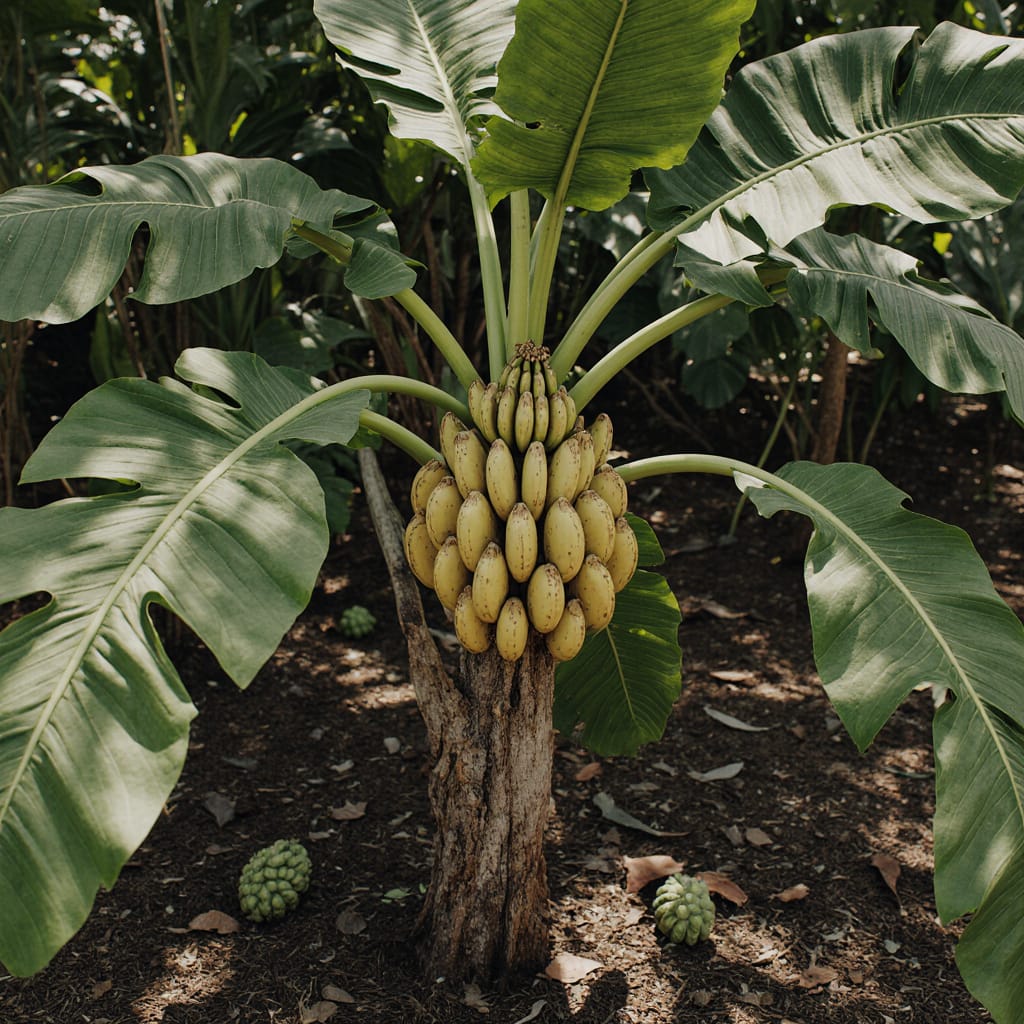Bring Life to Your Space with a Fiddle Leaf Fig
If you’re looking for a statement houseplant that adds elegance and vibrancy to your living space, the Fiddle Leaf Fig is your perfect match. Known for its large, glossy leaves and dramatic silhouette, this tropical tree is as bold as it is beautiful.
In this guide, you’ll learn everything you need to keep your Fiddle Leaf Fig happy and thriving indoors—from potting and watering, to light needs and common issues. Whether you’re a beginner or a seasoned plant parent, this stunning plant will soon become your favorite green companion.
🌼 Essential Care Tips for Your Fiddle Leaf Fig
A Glimpse of Nature: Fiddle Leaf Fig in Its Element

- Pick a ceramic or breathable clay pot with large drainage holes.
- Layer small stones at the bottom before adding soil mix.
- Use premium soil blended with perlite and orchid bark.
- Gently loosen roots before placing in the new container.
- Water thoroughly and keep in a shaded spot for 48 hours.
- Check if the top 2–3 inches of soil are dry before watering.
- Use room temperature, distilled or rain water if possible.
- Water slowly until it drains out the bottom of the pot.
- Empty the saucer to prevent root rot and fungus gnats.
- In winter, reduce watering frequency to once every 2–3 weeks.
- Place your plant near an east or south-facing window.
- Provide bright, indirect light — avoid harsh direct sun.
- Rotate the plant every 2 weeks to maintain even growth.
- Use a sheer curtain to diffuse strong afternoon sunlight.
- If light is limited, consider using a grow light during winter.
- Brown Spots: Often caused by overwatering or root rot.
- Leaf Drop: Can be due to stress, sudden light change, or cold drafts.
- Yellow Leaves: Usually a sign of too much water or poor drainage.
- Curled Leaves: Indicates underwatering or low humidity.
- Stunted Growth: Could be due to nutrient deficiency or poor light.

Why Fiddle Leaf Fig Is the Perfect Indoor Tree
The Fiddle Leaf Fig (Ficus lyrata) has become one of the most desirable houseplants in modern homes—and for good reason. With its large, glossy violin-shaped leaves and sculptural presence, it offers both elegance and a natural touch to interiors.
🌿 Aesthetic Appeal
Few indoor plants match the architectural beauty of the Fiddle Leaf Fig. Whether placed in a minimalist living room or bohemian bedroom corner, it adds instant style. Its lush green foliage works with any design theme—modern, rustic, or classic.
🪴 Easy to Style
This tree-like plant can grow up to 6 feet indoors, making it an excellent vertical element for empty corners or beside windows. Use a decorative ceramic pot or woven basket to enhance its look. With occasional pruning, you can shape it to suit your space perfectly.
Pro Tip: Place your Fiddle Leaf Fig in a bright spot with filtered sunlight. It loves consistency—avoid moving it often once it adapts to a place.
💧 Low-Maintenance Yet Rewarding
Once you understand its basic needs—indirect light, watering only when the top soil is dry, and occasional rotation—your Fiddle Leaf Fig will thrive. It’s not as “fussy” as its reputation suggests. Just avoid overwatering, and you’ll avoid 90% of common issues.
🌱 Air-Purifying Benefits
Like many indoor plants, Fiddle Leaf Figs help purify the air. They absorb toxins and increase oxygen flow, making your indoor space not only prettier, but healthier too. Adding one to your workspace or bedroom can subtly boost your environment and mood.
🏠 Final Thoughts
If you’re looking for a statement plant that offers both beauty and benefits, the Fiddle Leaf Fig is a perfect choice. With just a little care and the right placement, it will be the green centerpiece of your indoor garden for years to come.
1. How often should I water my Fiddle Leaf Fig?
Water every 7–10 days or when the top 2–3 inches of soil feel dry. Avoid letting it sit in standing water.
2. Why are the leaves turning brown?
This can result from overwatering, poor drainage, or low humidity. Ensure your pot has proper holes and don’t overwater.
3. Can I keep my Fiddle Leaf Fig in a low-light room?
Fiddle Leaf Figs need bright, indirect light. Low-light conditions may cause leaf drop or stunted growth.
4. How tall can a Fiddle Leaf Fig grow indoors?
They can grow up to 6–10 feet indoors with the right care and space. Regular pruning helps shape them as they grow.
5. Should I mist the leaves?
Occasional misting helps improve humidity, but it’s not a substitute for proper watering or room humidity levels.